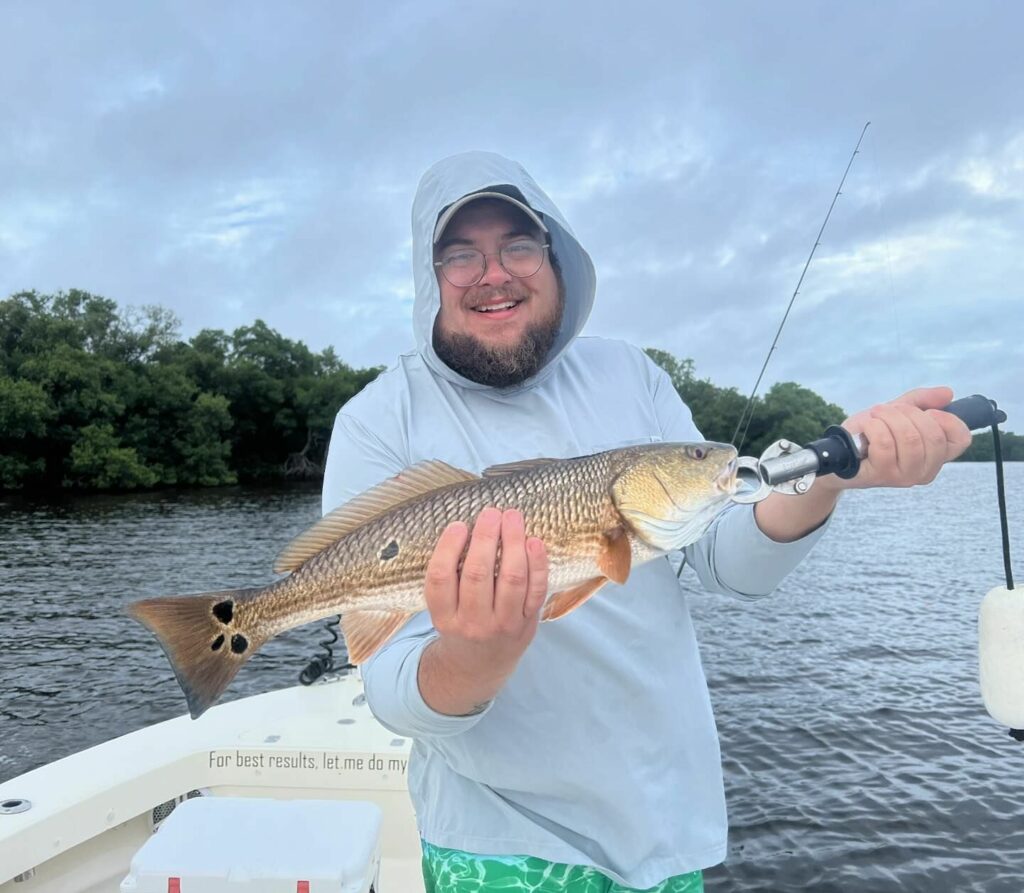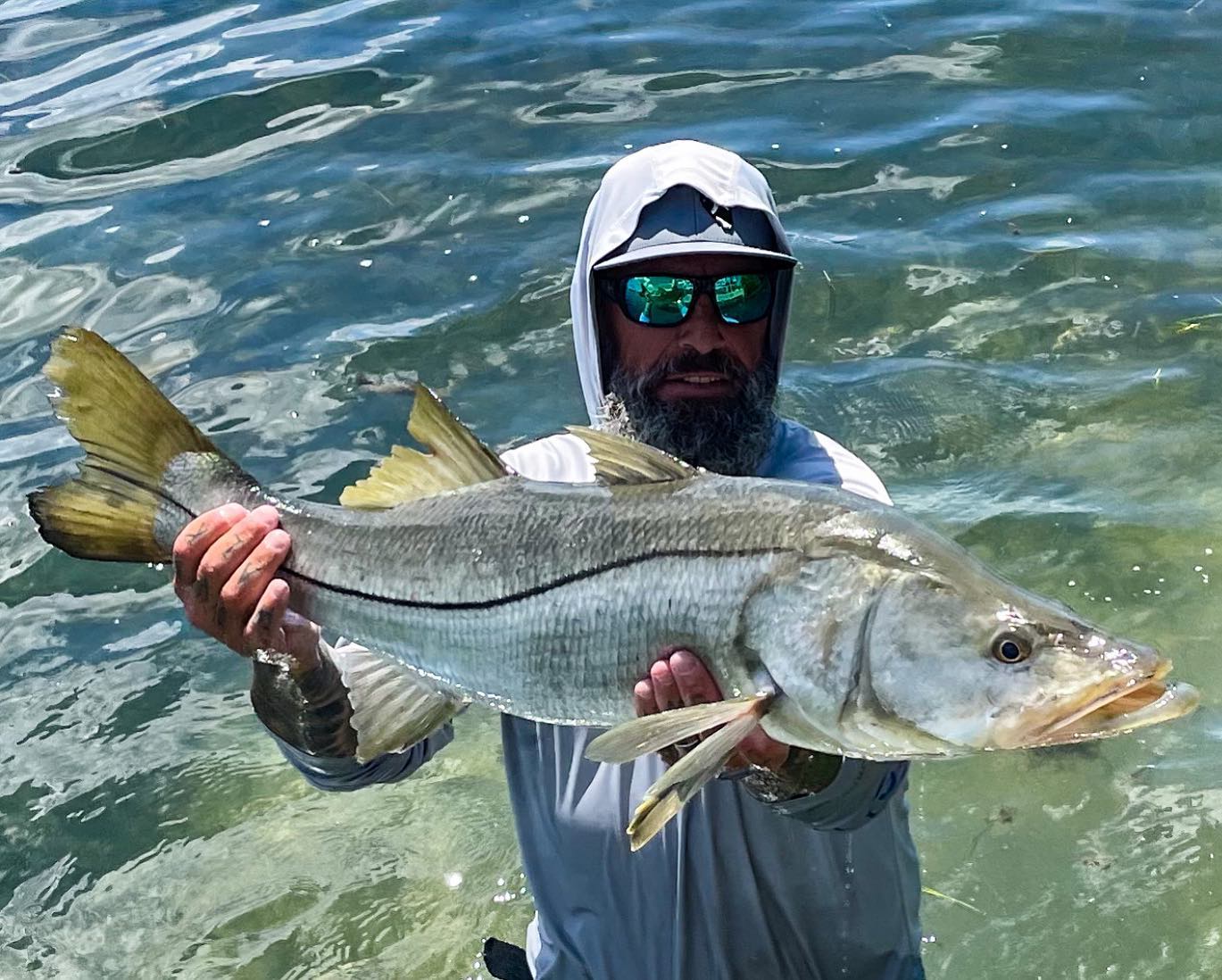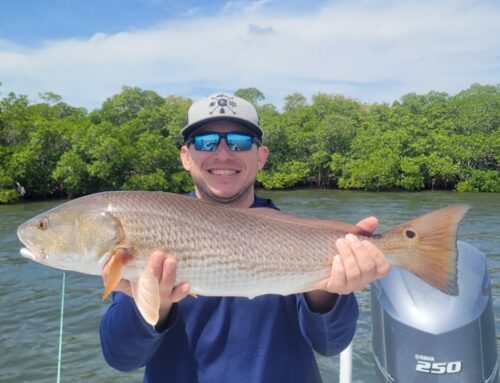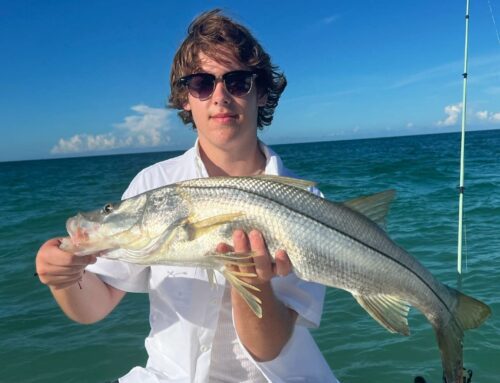Last Updated on February 25, 2025 by Writer
Spring in Florida marks the start of some of the best inshore fishing of the year, and for those heading out with Captain Nate, it’s a prime opportunity to target aggressive, hard-fighting fish in shallow waters. This season offers a mix of rising temperatures, active baitfish, and shifting feeding patterns that make the fishing both exciting and unpredictable. The challenge isn’t just finding the fish, but understanding how they move and react as spring progresses.
Why Spring Fishing Stands Out
Spring fishing is unique because it bridges the transition between winter’s slow-moving fish and summer’s peak feeding frenzies. Water temperatures climb from the cooler months, reaching that perfect range where fish metabolism increases, and they start hunting more actively. Predators that spent winter in deeper channels begin pushing into the shallows, following schools of baitfish that make their return with the warming waters. The key to a successful spring fishing trip is knowing where to find fish during this transition.
Tidal movement is another major factor. Unlike in winter, when sluggish fish require more patience and precision, spring tides often trigger intense feeding activity. On strong incoming tides, baitfish are pushed onto the flats, and game fish move in behind them to take advantage. Outgoing tides create ambush points around cuts and channels where predators wait for an easy meal. The ability to read these patterns can make all the difference in putting fish in the boat.

The Fish You’ll Encounter in the Spring
Spring inshore fishing in Florida offers an incredibly diverse lineup of species, each reacting differently to the seasonal changes that occur this time of year. Warmer waters and an influx of baitfish trigger aggressive feeding behaviors across a wide range of fish, making for some of the best action of the year.
Redfish thrive in the warming shallows, often traveling in schools across the grass flats. Their feeding activity is at its peak in the spring as they take advantage of crabs, shrimp, and baitfish pushed into their paths by moving tides. Sight fishing for tailing redfish in calm conditions can be one of the most rewarding challenges this time of year.
Snook, known for their power and explosiveness, start transitioning from their deeper winter holds into mangrove shorelines, sandy drop-offs, and points where bait is being funneled through the current. Spring is when they begin feeding aggressively in preparation for their summer spawn, making this one of the best times to target them on live bait and well-placed artificial lures.
Speckled Trout move into shallower grass flats and potholes in large numbers, with bigger “gator” trout feeding most actively during low-light conditions. They key in on pilchards, shrimp, and small baitfish, making soft plastics and topwater lures incredibly effective for targeting them.
Tarpon, often referred to as the silver king, start appearing in greater numbers as spring progresses. These migratory fish begin pushing through inshore waters, feeding on mullet and other large baitfish. Hooking into one of these powerful fish is a battle that every fisherman remembers.
Black Drum are a year-round target but tend to be more active in the spring as they school up around structure. These bottom feeders readily take shrimp, crabs, and cut bait, making them a reliable option when targeting deeper channels and bridges.
Pompano are another sought-after species in the spring, especially along sandy flats and passes where they chase down small crustaceans. Their speed and fight on light tackle make them a favorite among inshore fishermen.
Jack Crevalle make their presence known with surface-smashing strikes and fast-moving schools. These aggressive fish offer a intense fight, especially when encountered in deeper channels or open bays.
Flounder can also be found in spring, staging near sandy edges and drop-offs where they ambush passing prey. Slow presentations with live bait or jigging soft plastics along the bottom work well for these ambush predators.
Bluefish and Spanish Mackerel invade inshore waters in the spring, often providing fast-paced action when feeding on bait schools. Their sharp teeth and aggressive nature make them a fun challenge, particularly when fishing with spoons and fast-moving lures.
Spring fishing in Florida isn’t just about targeting one or two specific fish—it’s about experiencing the full variety of what these waters have to offer. Each species presents a different challenge, and understanding their seasonal behaviors is key to making the most of a trip on the water.

Spring Tactics: Adjusting to Changing Conditions
Spring conditions shift rapidly, and the best fishermen are the ones who adapt. A few key factors influence success this time of year:
- Water Clarity: Spring brings a mix of clear and murky water depending on rainfall and wind conditions. On clearer days, fish are more skittish, requiring longer casts and stealthier approaches. In stained water, fish rely more on vibration and scent, making topwater lures, live bait, and scented soft plastics highly effective.
- Tidal Influence: As spring tides become more active, bait movement dictates where the best fishing occurs. Knowing the best times to target fish based on tidal movements can be the difference between a slow day and a banner trip.
- Baitfish Migration: The return of pilchards, threadfin herring, and mullet sparks feeding frenzies across the flats. Matching your bait choice to what’s naturally in the water gives you a much better shot at triggering a bite.
Reading the Water: Where to Fish in Spring
Different areas produce different results in spring, depending on conditions and fish movement. Some of the best locations include:
- Shallow Grass Flats: Ideal for sight fishing redfish and trout in the morning hours.
- Mangrove Shorelines: The prime territory for snook ambushes, especially during a moving tide.
- Creek Mouths and Channels: Great locations to find fish staging between feeding grounds, particularly on a falling tide.
- Sandbars and Drop-offs: Areas where baitfish gather, attracting a mix of predators looking for an easy meal.
Expanding Your Techniques for Success
Fishing is an ever-evolving sport, and fine-tuning techniques can significantly improve your results. Retrieval speed plays a crucial role when using artificial lures—faster retrieves tend to excite reactionary feeders like Spanish mackerel and jack crevalle, while slower, erratic movements work best for snook and redfish waiting to ambush prey. Additionally, understanding how different lures behave in varying water conditions can make a major impact. For instance, suspending twitch baits work well in slightly deeper pockets where trout often hold, while topwater plugs are best deployed during early mornings or overcast conditions when predatory fish are actively feeding near the surface. Adjusting rod angles while fighting fish is another overlooked but essential skill—keeping steady pressure and guiding fish away from structure like mangroves, oyster beds, and dock pilings can mean the difference between landing a catch and losing it to a break-off. Proper drag settings also play a major role, as too much tension can pull the hook free, while too little allows the fish to run deep into cover. Mastering these nuanced techniques increases hook-up rates and ensures more successful fishing sessions.

Live Bait vs. Artificial Lures
Live Bait Strategies: Free-lining live shrimp or pilchards under docks, mangroves, or over grass flats is one of the most productive approaches in the spring. Letting the current move your bait naturally helps entice wary fish, making them more likely to strike. If the bite slows, adding slight movement to the bait by twitching the line occasionally can sometimes trigger an aggressive response. Using a weighted rig in deeper channels can also produce bites from bigger fish looking for an easy meal. Chumming with live bait can further increase your chances by drawing fish into the area and keeping them actively feeding.
Artificial Lure Selection: Soft plastics, jerkbaits, and topwater plugs all have their place in spring fishing. Working a lure to mimic an injured baitfish can provoke aggressive reaction strikes. Varying your retrieve is essential—faster retrieves can excite mackerel and jacks, while slower movements can entice snook and redfish. During low-light conditions, topwater plugs can create explosive strikes, adding an extra layer of excitement to your fishing experience. When fishing in murky water, using brightly colored lures or those with built-in rattles can help attract fish by increasing visibility and sound appeal.
Spring Fishing with Captain Nate: The Ultimate Experience
A day on the water with Captain Nate is more than just a fishing trip—it’s a masterclass in understanding the nuances of Florida’s inshore waters. With years of experience tracking seasonal fish movements and interpreting the subtle changes in tides and weather, Captain Nate ensures each outing is optimized for success. His deep knowledge of the region’s best fishing spots and his ability to adapt strategies based on fish behavior mean that every fisherman, seasoned or new, has the best possible chance of landing an impressive catch. From sight fishing for tailing redfish to targeting big snook lurking under mangroves, each trip offers an opportunity to refine skills, learn more about local waters, and experience the excitement of inshore fishing at its best.

Spring is Here—Get on the Water
For those looking to experience some of the most exciting inshore fishing of the year, spring provides unparalleled conditions for an action-packed day on the water. Warmer temperatures bring fish into feeding mode, while increased bait movement makes it easier than ever to locate active fish. Every cast presents a chance at hooking into a strong, aggressive fish that’s taking full advantage of the season’s peak feeding cycle.
Whether you’re looking to sight fish for tailing redfish, drift baits for hefty speckled trout, or test your skills against hard-fighting snook, spring offers something for every fisherman. This is the time of year when patience, technique, and knowledge of the water pay off in the form of memorable catches. Those who understand tidal movements, bait presentation, and seasonal fish patterns have a distinct advantage, but even those new to the sport will find the experience rewarding.
Captain Nate’s experience navigating these waters means every trip is a chance to not only catch fish but also to learn the finer details of inshore fishing. His understanding of fish behavior, combined with a deep knowledge of productive areas, ensures that each charter is tailored for success. Whether you’re a seasoned fisherman chasing a trophy or just looking to enjoy a great day on the water, a trip with Captain Nate delivers a fishing experience that makes the most of spring’s prime conditions.
Don’t miss out on one of the best fishing seasons Florida has to offer. Book your trip today and take advantage of spring’s outstanding inshore action, where every cast has the potential to make your next fishing story one to remember.




